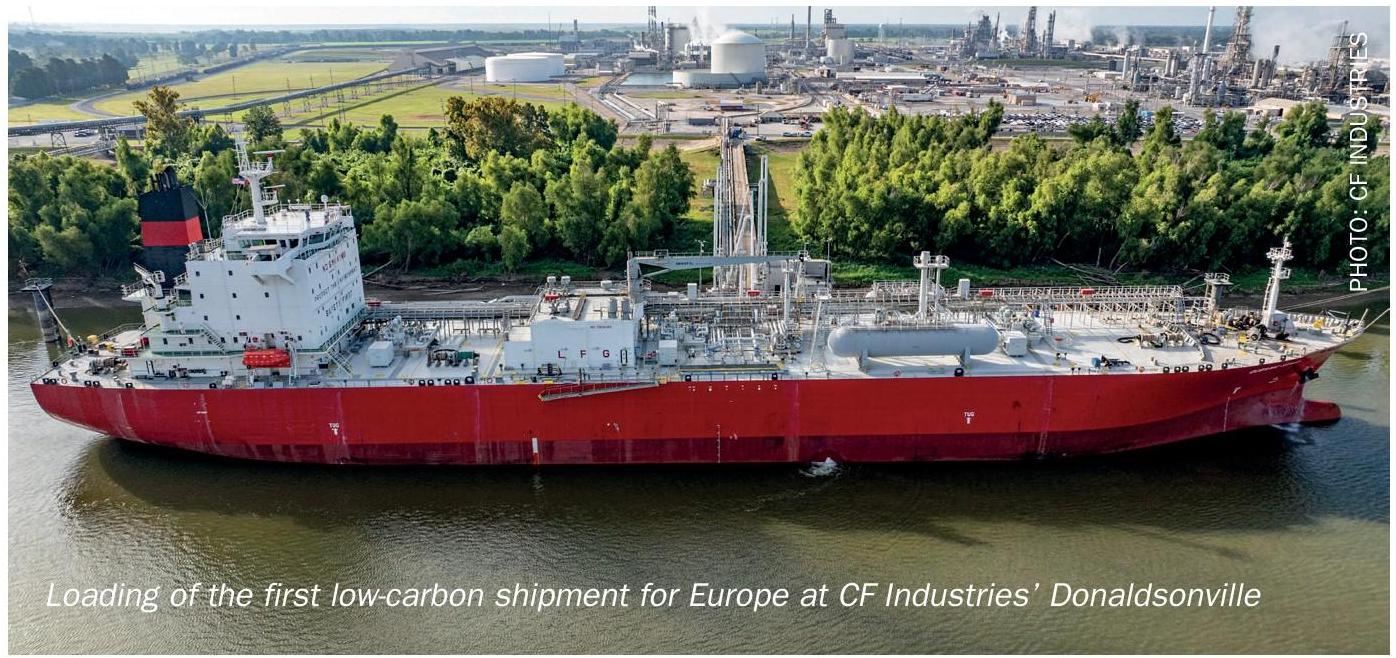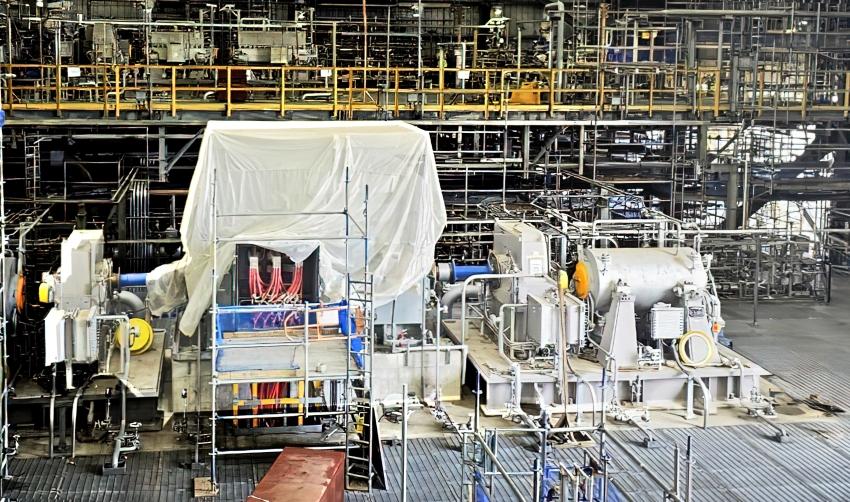Fertilizer International 526 May-Jun 2025

6 May 2025
Market Insight
Market Insight

PRICE TRENDS
Market snapshot, 10th April 2025
Urea takes strength from India. Suppliers were looking to gain ground in mid-April with India in search of urea and spot interest emerging from Australia.
India’s IPL closed a tender for 1.5 million tonnes on 8th April – 800,000 tonnes for the west coast and 700,000 tonnes for the east coast – for shipment by mid-June latest. It is not yet clear whether IPL can secure the tonnages required, with just short of 400,000 tonnes accepted to date. The lowest offer was $385/t cfr west coast for 50,000 tonnes and $398/t east coast for 75,000 tonnes.
NOLA prices, unsurprisingly, have been volatile as US tariffs have come and gone, hitting $425/st before slipping below $400/st. There have been some market negatives too. Brazil, for example, saw offers fall to $383/t Paranagua while bids slumped with unconfirmed reports of trades at $370-375/t cfr.
Ammonia bearish amid tariff complexities. Ammonia prices east and west of Suez remain firmly on the downside, with supply still heavily exceeding demand and suppliers scrambling to place excess tonnages. This bearish market sentiment was exemplified by a Trammo sale to OCP at $415/t cfr Morocco, some $20/t below Tampa’s $435/t cfr settlement for April and around $44/t down on what OCP last paid for spot tonnes in early February.
Across the Atlantic, exports from the US Gulf are continuing. Price suggestions there are now below $400/t f.o.b. – and possibly as low as $350/t f.o.b. – amid healthy availability from regional suppliers.
Market length in Southeast Asia, and poor demand from adjacent markets, has seen Mitsui resort to shipping a Kaltim cargo from Indonesia to the Americas. Industrial appetite from East Asia remains limited, with contract prices in South Korea, Taiwan and China steadily slipping towards the $300/t cfr mark.
No end in sight for DAP/MAP price rises. Key DAP and MAP benchmarks both east and west of Suez – including prices in India, Brazil and the US – continued to climb in mid-April, amid firm demand and exceptionally tight availability.
The US market received extra support from tariff expectations and uncertainty, with prices for New Orleans DAP and MAP barges rising on concluded trades. The evolving tariff situation in the US may further limit import options and/or drive-up US pricing.
The absence of Chinese DAP/MAP supply is keeping global availability tight and, consequently, news is keenly awaited on when China might return to the export market. The spot price for DAP to India has increased sharply to $668-675/t cfr. Further increases are widely expected over the coming weeks.
Additional demand from EABC’s latest tender, closing 23rd April, is another cause of tight DAP availability. EABC, which typically imports more than one million tonnes NPS from Morocco annually, is understood to have secured around 660,000-720,000 tonnes of DAP to date.

Potash bullish yet largely flat. Potash benchmarks outside of Southeast Asia and China are mostly stable. Bullish sentiment is being supported by the continued limited availability of product for prompt shipment.
In Southeast Asia, Pupuk Indonesia’s long awaited 170,000 tonne standard MOP import tender is expected to contribute further to the upward price momentum. Initial offers were reported between $360-400/t cfr for shipments from July to September. This pathfinder tender is expected to provide a clearer indication of pricing in the coming months. In the meantime, standard MOP prices held at $320-335/t cfr.
Brazil’s MOP import prices held steady at an average of $348/t cfr, with May shipments sold out and limited availability. Offers for June have spiked to $350-370/t cfr, although no sales at the higher end of this range have been confirmed.
The US market has remained quiet this week following the Trump administration’s 2nd April announcement confirming potash’s exemption from import duties under Annex II. Underlying market uncertainty has, however, been compounded by severe weather and flooding causing operational disruptions and delays along the Mississippi River. The NOLA market experienced a slight decline, with MOP values averaging $316.5/st f.o.b.
Global sulphur prices mostly unchanged. Global sulphur prices were mostly unchanged in mid-April, except for Chinese domestic prices which slid back on weakening demand.
Prices in China have dropped to a delivered price of approximately $272/t cfr. Domestic demand from both the agricultural and industrial sectors has weakened in recent weeks. This has been due to uncertainty over US tariffs and Chinese export restrictions, as well as the imminent closing of the spring application window.
Middle East prices remained flat for the third consecutive week. Monthly contracts from Kuwait Petroleum Corporation, Adnoc and QatarEnergy Marketing ranged $275-280/t f.o.b., while second quarter contracts were settled at $240-250/t f.o.b., an average increase of $90/t.
OUTLOOK
Urea prices bottom out. India finally stepping into the market has ended urea’s downwards trajectory. Prices should now stabilise in the short term, given that India is likely to have to tender again. Not every indicator is expected to increase, with fading European interest likely to take its toll on Algerian and Egyptian benchmarks, for example. While prices have recovered somewhat, further pressure is expected going forward as European and US demand diminishes. Prices could exceed predictions, however, if Chinese exports fall below CRU’s forecast of 2.6 million tonnes for 2025, and if the EU moves to impose tariffs on Russian imports from July.
Ammonia declines to continue. Prices are expected come under further pressure, although it remains to be seen just how much further Asian values can decline before producers begin to shutter output. Conversely, questions remain about how much of an upside impact the 10% US import tariff will have on May’s Tampa settlement. In general, ammonia price declines are forecast to continue into the second quarter as healthy supply continues to outweigh global demand. Prices could be pressured further if EuroChem’s Port Favor terminal at Ust Luga ramps-up its transshipment capacity to one million t/a, resulting in an uptick in Baltic Sea exports.
Phosphates firming on tight supply. Phosphates prices have firmed over the past month and are expected to increase further over the coming weeks, as demand picks up while supply remains exceptionally tight. The second quarter outlook has become more bullish due to China’s delayed return to export markets. While slight price declines are possible towards the end of the quarter, bullish sentiment should prevail at least until then. Prices could remain firmer for longer, however, if China exports return even later than expected and/ or in lower volumes than previously forecast.
Potash prices revised higher. Firm sentiment persists in the MOP market, driven by limited May product availability in most key markets. In Southeast Asia, the settlement of the latest Pupuk Indonesia tender is expected to provide further clarity on price direction in coming weeks. Key MOP contracts are expected to settle in May at prices higher than previously forecast. Potash spot prices outside the US have also been revised slightly higher due to healthy demand, ongoing uncertainty over US tariffs and second quarter mine production cutbacks. US tariffs, by creating uncertainty, could raise the US premium over global prices, while supply issues may worsen if producers scale back their output.
Sulphur at its peak. Sulphur prices are expected to reach their peak in April and then gradually decrease after the Chinese spring application season as additional volumes enter the market. Prices could decline more sharply than expected if market conditions in Asia change and demand weakens further. In the short term, global sulphur prices are likely to enter a period of limited movement as demand in China weakens.






